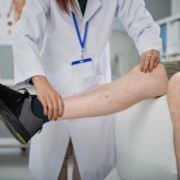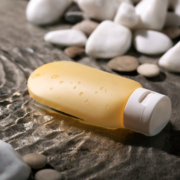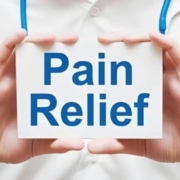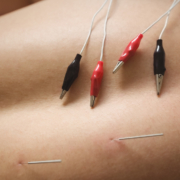How to Identify Your Personal OCD Triggers with Confidence
Obsessive-Compulsive Disorder (OCD) is more than just recurring thoughts and repetitive actions. At its core, it’s often fueled by OCD triggers—specific thoughts, images, or situations that ignite distress, anxiety, or intrusive thinking. Knowing how to recognize and manage these triggers is the foundation of meaningful, lasting healing. At Austin Bridges Therapy, our personalized therapy intensives help clients navigate OCD with clarity, support, and confidence.
What Are OCD Triggers?
OCD triggers are the catalysts behind obsessive thoughts and compulsive behaviors. They can be external (like touching a doorknob) or internal (a distressing thought or memory). Everyone’s triggers are different, and many people with OCD may not initially be aware of what sets their symptoms in motion.
Understanding your triggers is not about labeling yourself—it’s about creating a strategy. Identifying these emotional landmines gives you a roadmap, helping you work through them with intention rather than avoidance.
Common Categories of OCD Triggers
OCD manifests in many ways, but there are several trigger categories therapists commonly see:
- Contamination fears – Concern about germs, illness, or unclean environments
- Harm obsessions – Fear of causing harm to oneself or others
- Perfectionism and symmetry – A need for things to be “just right”
- Moral or religious scrupulosity – Obsessions with morality, sin, or offending religious beliefs
- Relationship obsessions – Doubts or fixations around romantic partnerships
- Intrusive sexual or violent thoughts – Unwanted, disturbing thoughts that cause distress.
Each of these themes has its own unique set of OCD triggers, and being able to pinpoint them makes therapy far more effective.
Why Recognizing OCD Triggers Is Crucial
Ignoring your OCD triggers can lead to a vicious cycle. You get triggered, feel anxious, perform a compulsion to neutralize the anxiety—and then do it again when the same situation reappears.
This cycle keeps you trapped. But awareness breaks the loop. Once you identify what triggers your OCD, you can begin learning new ways to respond. At Austin Bridges Therapy, our therapy intensives use structured sessions to help you face, understand, and dismantle these patterns with compassionate guidance.

How to Identify Your Personal OCD Triggers
Recognizing OCD triggers is not always straightforward. They can be subtle, deeply embedded in your thoughts, or masked by routines you think are “normal.” Here’s how to begin:
1. Keep a Thought Journal
Start by recording your thoughts, feelings, and actions throughout the day. Pay close attention to when you feel anxious or the urge to perform a compulsion. Ask yourself:
- What happened before I felt this way?
- What did I think would happen if I didn’t act?
- How strong was the anxiety?
Over time, your notes will reveal patterns—your triggers often hide in those patterns.
2. Watch for Avoidance
Avoidance is a strong clue. If you’re sidestepping certain situations or people regularly, dig into why. Are you afraid of contamination, judgment, or triggering a thought? Avoidance often reinforces OCD. Identifying what you’re avoiding reveals your OCD triggers.
3. Reflect on Compulsions
Ask: What does this compulsion stop me from feeling? For example, if you wash your hands repeatedly, the underlying fear might be contamination or getting sick. That fear is the trigger. Looking beyond the action helps uncover what really drives the behavior.
4. Seek Professional Help
You don’t need to do this alone. The team at Austin Bridges Therapy specializes in working with clients who feel stuck in these cycles. Through bridge therapy, we help uncover even the most hidden triggers using trauma-informed, evidence-based approaches.
How Bridge Therapy Supports OCD Recovery
Bridge therapy is an innovative model that fills the space between weekly therapy and full-scale intensive outpatient programs. At Austin Bridges Therapy, our therapy intensives are designed for individuals ready to dive deeper into their healing.
Here’s how we use bridge therapy to identify and manage OCD triggers:
- Structured daily sessions allow us to explore your symptoms more thoroughly
- Exposure and response prevention (ERP) is used in a controlled, supportive environment
- Mindfulness and somatic techniques help ground your body during exposure
- Psychoeducation empowers you with knowledge about how OCD operates
This approach accelerates healing by providing hands-on, immersive therapeutic experiences tailored to your unique needs.
Practical Steps to Manage OCD Triggers Once Identified
Once you’ve discovered your OCD triggers, you can begin managing them more effectively. Here’s how:
1. Practice Exposure and Response Prevention (ERP)
ERP involves facing your trigger without performing the compulsion. Over time, your brain learns that the feared outcome doesn’t occur—or if it does, it’s manageable. ERP is a core component of OCD treatment and is central to our work at Austin Bridges Therapy.
2. Use Grounding Techniques
When you’re triggered, grounding techniques like deep breathing, labeling your surroundings, or repeating calming affirmations help reduce anxiety without compulsions.
3. Shift Your Internal Dialogue
Replace statements like “I can’t handle this thought” with “This is a thought, not a fact.” Reframing your internal language decreases the power of your triggers.
4. Stay Consistent
OCD is a chronic condition, but progress is absolutely possible with consistency. Practice your coping strategies daily—even when you’re not triggered. It strengthens your resilience over time.
When to Reach Out for Help
If your OCD triggers are interfering with your ability to work, connect, or feel calm in your daily life, it’s time to reach out. Many clients wait too long, believing they can “just get over it.” OCD is not a character flaw—it’s a neurobiological disorder. And with the right help, you can absolutely learn to manage it.
Our therapy team in Austin, TX, provides intensive support for OCD through a holistic, person-first lens. Whether you need short-term therapy intensive or ongoing support, Austin Bridges Therapy offers a safe place to begin your journey.
Take the First Step Toward Relief
Identifying your OCD triggers is not about judgment—it’s about liberation. It’s a chance to step out of reactive cycles and into intentional living. With the help of experienced therapists, including through our bridge therapy model, you can finally start feeling in control.
Don’t wait. Start uncovering your triggers, and take your first confident step toward healing with Austin Bridges Therapy.









